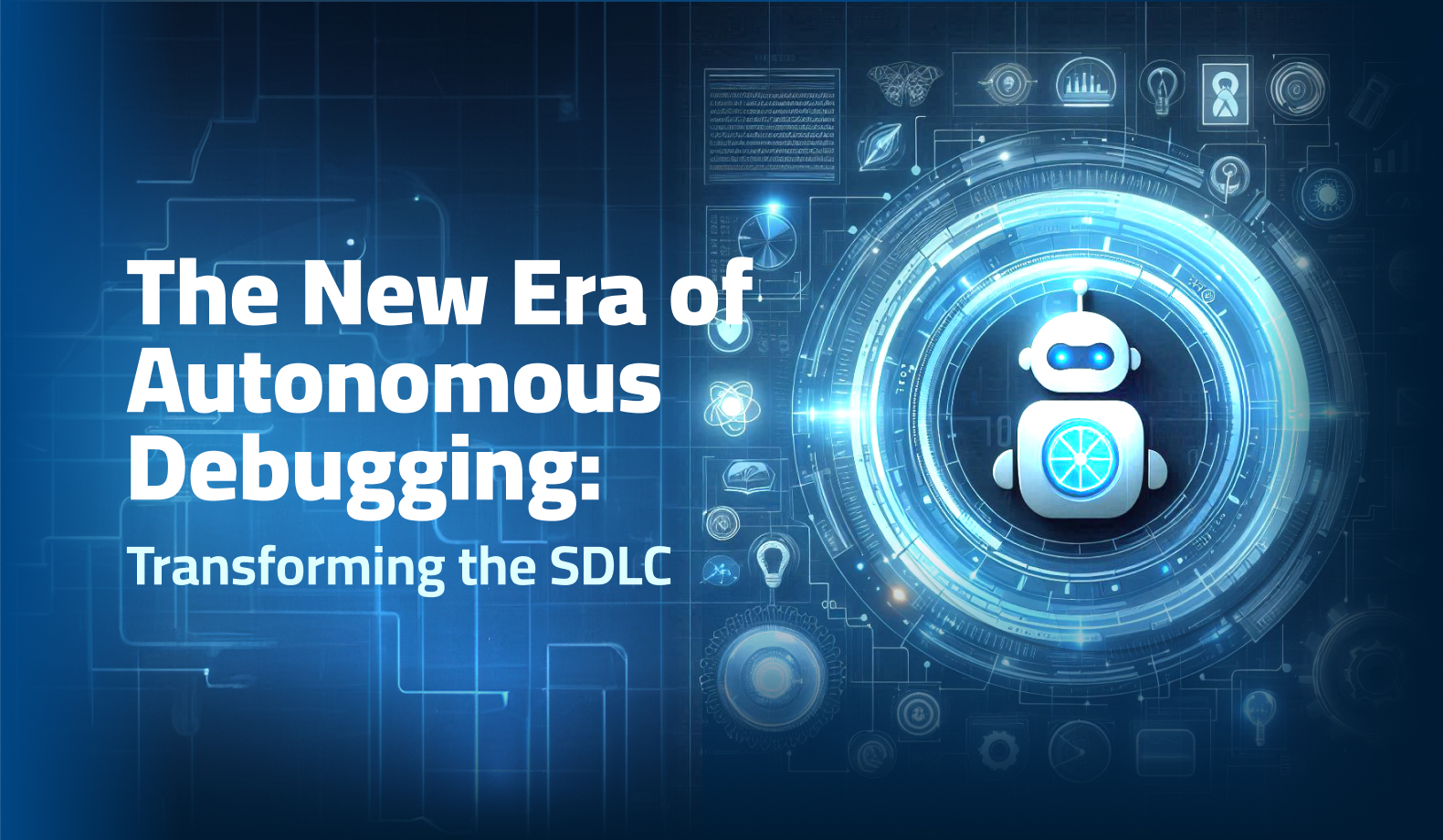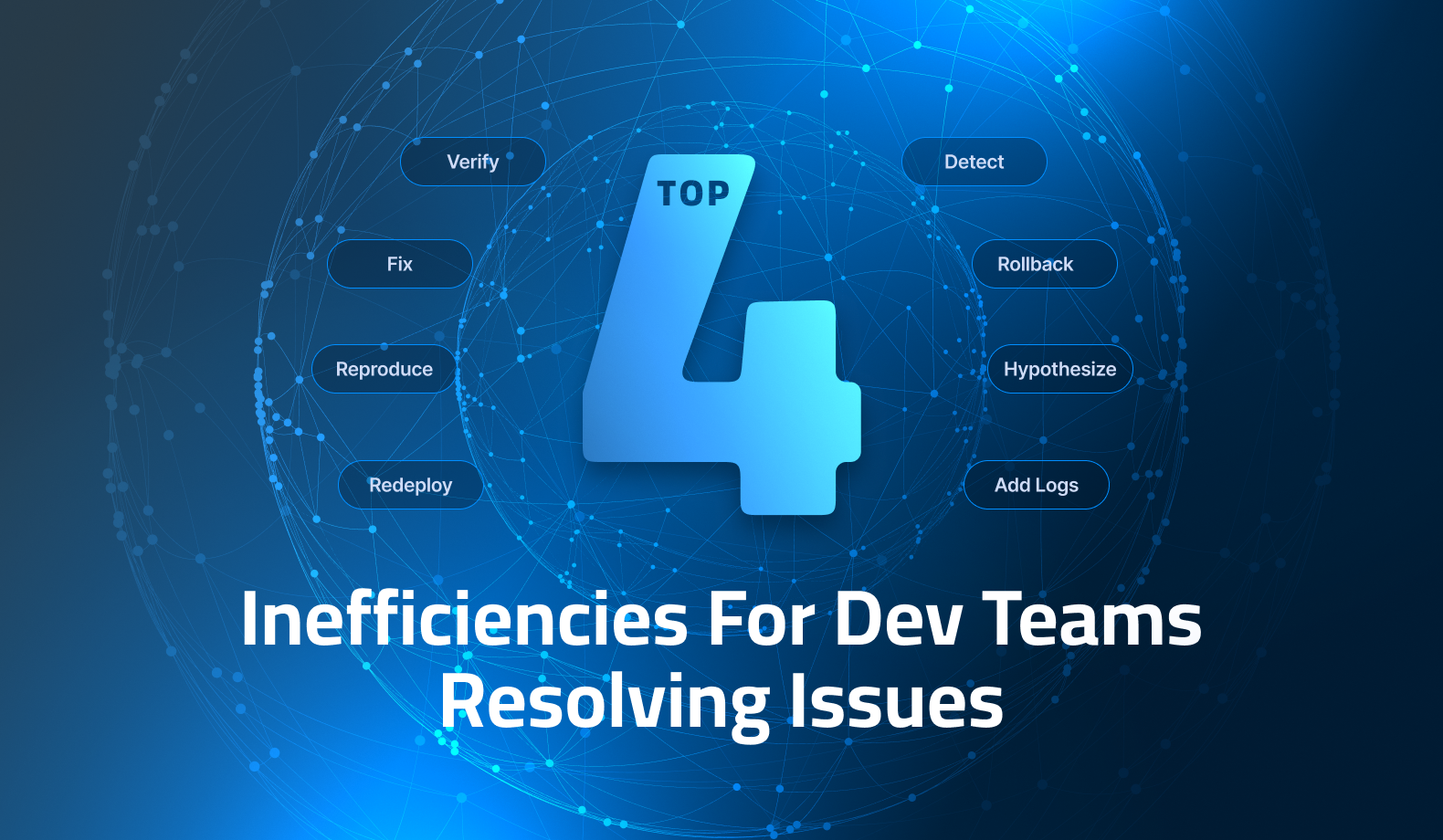

The New Era of Autonomous Debugging: Transforming the SDLC
The software world is changing rapidly due to advancements in GenAI. These technologies are disrupting traditional processes and driving automation across every part of the SDLC. The market for AI code tools is estimated to reach $30 billion by 2032. It started with code generation, then moved to testing, QA, automatic pull requests, and beyond. Interestingly, while various researches show that 20% of developers’ time is spent coding and 30% on testing, a significant 50% is still dedicated to debugging and troubleshooting, once the software is up and running. This is becoming even more important given that AI coding solutions have undoubtedly boosted productivity, they’ve also introduced new risks, such as code hallucinations and bugs.
The Complexity of Runtime Debugging
Complex, runtime debugging remains a challenge and is difficult to automate. The cost of bugs escalates as code progresses through the SDLC, from a few hundred dollars in development to potentially millions in production, as evidenced by CrowdStrike’s recent outage. For the Corporate 2000, production downtime costs $400 billion annually.
While debugging stateless code in a local development environment is addressed by solutions like CoPilot, complex debugging tasks often follow the deployment phase. These tasks occur when applications are running remotely—sometimes cloud-native—across various environments such as dev, QA, staging, and production. This part is particularly complex because it relies heavily on the enterprise context rather than the code itself. Developers need to interact with various systems like ITSM and incident management, observability tools, databases, configurations, CRMs, feature management platforms, API platforms, bug tracking systems, version control systems (VCS), and more to collect signals. These signals include runtime behavior, deployment configurations, environment-specific issues, different cloud infrastructures, customer data, and third-party integrations. These factors are not code-only and cannot be handled in a stateless local development environment. Just as autonomous driving relies on multiple sensors for accurate navigation, autonomous debugging must gather inputs from all these areas to be effective.
A New Era of Autonomous Debugging
At Lightrun, we have pioneered the Developer Observability market. By shifting observability left, Lightrun streamlines debugging and observability processes throughout the SDLC for enterprises. We’ve proven our value to enterprise customers, including Fortune 10 giants, by preventing production incidents and reducing application-level MTTR by over 90%, transforming it from days or weeks to mere minutes. Lightrun enables developers to dynamically instrument logs, metrics, and traces to gain real-time insights into live applications directly from the IDE.
Building on this success, we asked ourselves: Can we automate debugging end-to-end? Can we create a world where complex runtime bugs, which take developers days or weeks to troubleshoot, are automatically remediated? Can we elevate the existing power of Lightrun with GenAI?
Introducing Autonomous Debugging
We are excited to announce the launch of the industry’s first Runtime Autonomous AI Debugger, now available in private beta. By automating the entire debugging journey – from the initial ticket to pinpointing the exact culprit line of code in the IDE and suggesting a PR with a fix – Lightrun liberates developers from the endless cycle of troubleshooting. This innovative approach redefines observability and software debugging by saving developers from spending 50% of their time on troubleshooting, and cuts the operational MTTR of production incidents to mere minutes.
Lightrun automates the existing developer workflow for troubleshooting runtime issues. This iterative process involves hypothesizing potential root causes based on ITOps and observability signals, adding dynamic snapshots/logs on-the-fly to specific lines of code using our dynamic observability SDK, and performing line-by-line runtime debugging. This cycle repeats until the root cause is identified. Lightrun’s proprietary runtime debugging GenAI models suggest potential root causes and validate these hypotheses with real-time production data gathered by the SDK.
Our goal is to continuously refine our runtime debugging GenAI models and incorporate more signals from the broader enterprise landscape. This includes recent VCS code changes, user inputs, issue reproduction, ITSM workflows, and more.
Bridging the GenAI Gap
While billions have been invested in IDE-based GenAI coding, testing, and QA, runtime debugging in the IDE has been the missing link. In this new era of autonomous debugging, Lightrun seamlessly integrates into the developer workflow—from code writing to production operation—enabling a complete, automated GenAI experience within the IDE. This integration ensures safe GenAI transformations, enhancing both code quality and MTTR.
It’s Really not that Complicated.
You can actually understand what’s going on inside your live applications.



